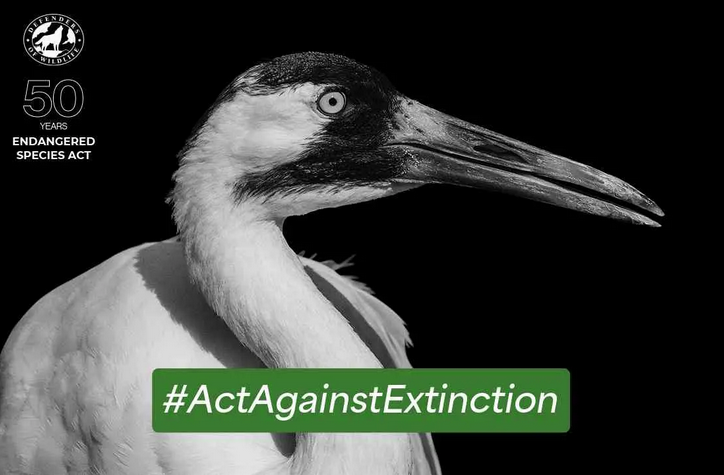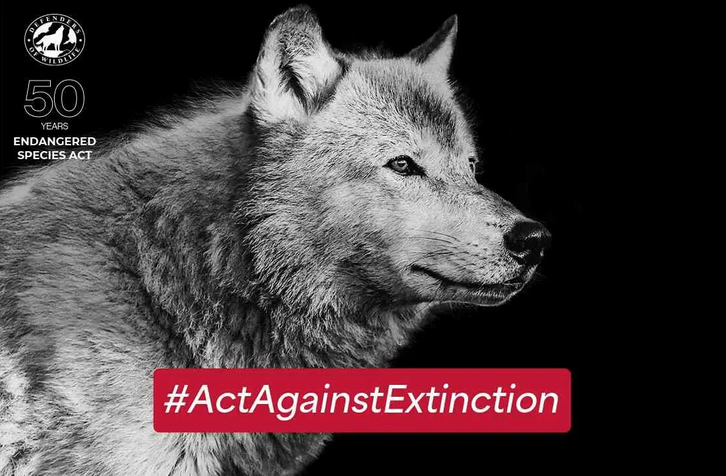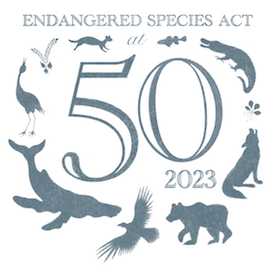By Andrew Carter and Chris Parsons, Defenders of Wildlife
The U.S. Endangered Species Act (ESA) is a federal law enacted in 1973 to protect species at risk of extinction. Under the ESA, a species can be listed as either “endangered” or “threatened” if it is at risk of becoming extinct in all or a significant portion of its range. Listing a species as endangered or threatened provides it with protection from certain activities that could harm or kill the species, as well as additional conservation measures to aid in its recovery. However, the process of adding a species to the ESA can be complex and involves scientific assessments, public comment periods, and legal considerations. In this article, we’ll explore the steps involved in adding a species to the ESA and the implications of listing a species as endangered or threatened.

How Does a Species Get Listed?
First, governmental agencies responsible for endangered species – either the U.S. Fish and Wildlife Service (FWS) or the NOAA National Marine Fisheries Service (NOAA Fisheries) – can decide a listing is needed.
However, one of the novel aspects of the ESA is that anyone can also submit a request to list a species under the act. In most cases listing decisions are a result of such petitions.
To be considered for listing, there must be evidence that a species is threatened or endangered because of one, or more, of the following five reasons:
- loss of a species’ habitat or range;
- over-exploitation of a species;
- disease or predation;
- failure of other regulations or measures to protect a species;
- other natural or manmade factors that threaten the species.
When deciding whether a species should be listed, the decision can only be based solely on “the best scientific and commercial information available.” Commercial information includes information on how many of the species are being traded or sold.
It’s a key part of the ESA that economic impacts should not play any role in deciding whether a species is listed. For example, if developers want to build in the middle of an endangered species’ habitat and listing the species could stop the project, this economic impact should have no influence over the listing decision. This is one reason why some developers, mining companies and similar businesses will oppose the listing of a species, and the protection that it brings, as it could potentially stop a financially profitable project for them. During the Trump Administration the agencies issued a regulation allowing them to evaluate the economic impacts of protecting endangered species on industry, even though making a listing decision based on costs is prohibited by the ESA.

The Process of Listing
When an application, or “petition”, for a species to be listed is received, the relevant government agency (FWS or NOAA Fisheries depending on the species) has 90 days to review the submission and decide whether or not listing might be called for. If they decide that the application should go forward there is a year-long review process, which includes asking the public to submit scientific or commercial information to back up, or refute, the application. Again, the government agencies are only supposed to consider these two types of information, not whether the listing would have an economic impact on businesses or companies.
If the agencies decide to go forward with listing the species, they publish a “proposed rule” announcing their intentions. Again, further information from the public is sought and after a year if they decide listing is still appropriate, the agency publishes a “final rule” declaring that the species has been listed.
While a species is being considered for listing, it’s classed as a “proposed species.” While this status doesn’t provide the same legal protections as listed species receive, the aim is that this status should encourage conservation action that helps the species while the listing process is being undergone.
One of the problems with the current ESA listing process is that it takes a lot of work to list and evaluate species. Unfortunately, Congress frequently limits the amount of money available to process, enforce and enact the ESA, meaning that there is often a large backlog of imperiled species that need to be assessed with few staff and resources available to do this assessment.
The Endangered Species Act is one of the most important laws to protect wildlife and our natural heritage in the U.S. Defenders of Wildlife is committed to ensuring that the ESA is protected and isn’t undermined by politicians. Defenders also advocates for the full funding of ESA – for its administration, enforcement and implementation.
You can help in this important work by becoming a member of Defenders of Wildlife.
If you want to take an active role in advocating for the conservation of endangered species visit our Activist Hub, which includes tips and suggestions for making your voice heard.
